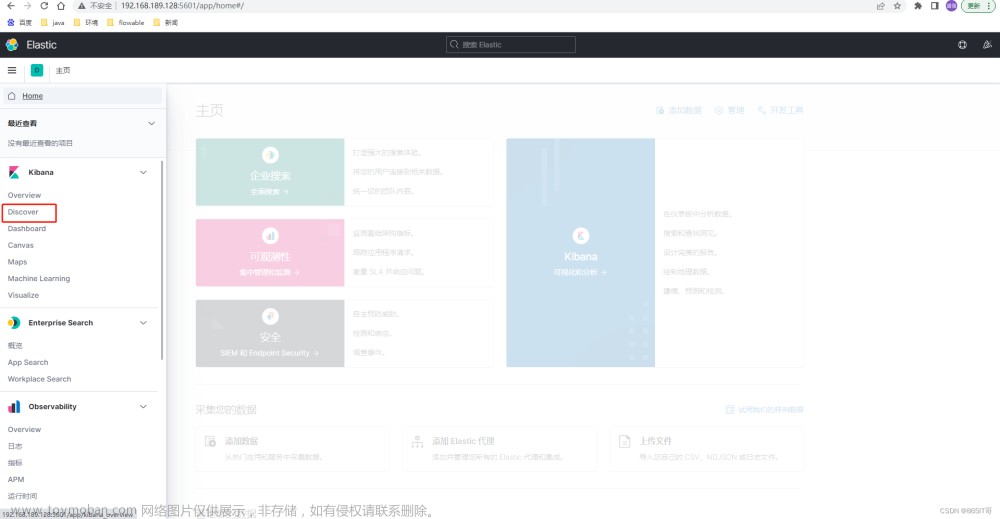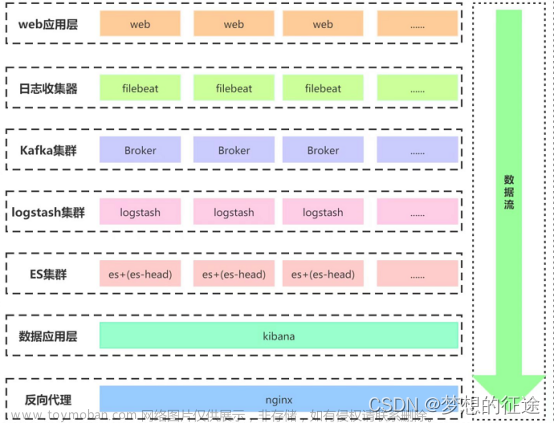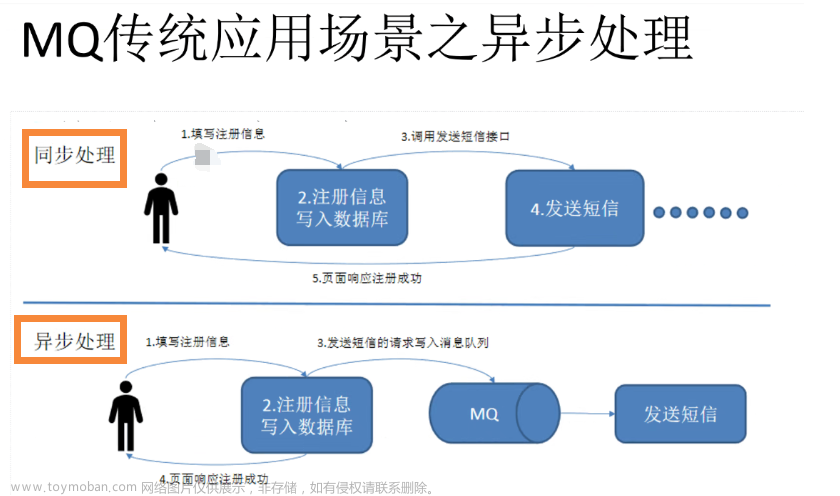前言
EFK简介
Elasticsearch 是一个实时的、分布式的可扩展的搜索引擎,允许进行全文、结构化搜索,它通常用于索引和搜索大量日志数据,也可用于搜索许多不同类型的文档。
FileBeats 是数据采集的得力工具。将 Beats 和您的容器一起置于服务器上,或者将 Beats 作为函数加以部署,然后便可在 Elastisearch 中集中处理数据。如果需要更加强大的处理性能,Beats 还能将数据输送到 Logstash 进行转换和解析。
Kibana 核心产品搭载了一批经典功能:柱状图、线状图、饼图、旭日图,等等。不仅如此,您还可以使用 Vega 语法来设计独属于您自己的可视化图形。所有这些都利用 Elasticsearch 的完整聚合功能。
Elasticsearch 通常与 Kibana 一起部署,Kibana 是 Elasticsearch 的一个功能强大的数据可视化 Dashboard,Kibana 允许你通过 web 界面来浏览 Elasticsearch 日志数据。
ELK和EFK的区别:
ELK 是现阶段众多企业单位都在使用的一种日志分析系统,它能够方便的为我们收集你想要的日志并且展示出来
ELK是Elasticsearch、Logstash、Kibana的简称,这三者都是开源软件,通常配合使用。
- Elasticsearch –>存储数据
是一个实时的分布式搜索和分析引擎,它可以用于全文搜索,结构化搜索以及分析。它是一个建立在全文搜索引擎 Apache Lucene 基础上的搜索引擎,使用 Java 语言编写,能对大容量的数据进行接近实时的存储、搜索和分析操作。
- Logstash –> 收集数据
数据收集引擎。它支持动态的从各种数据源搜集数据,并对数据进行过滤、分析、丰富、统一格式等操作,然后存储到用户指定的位置。
- Kibana –> 展示数据
数据分析和可视化平台。通常与 Elasticsearch 配合使用,对其中数据进行搜索、分析和以统计图表的方式展示。
EFK是ELK日志分析系统的一个变种,加入了filebeat 可以更好的收集到资源日志 来为我们的日志分析做好准备工作。
优缺点
Filebeat 相对 Logstash 的优点:
侵入低,无需修改 elasticsearch 和 kibana 的配置;
性能高,IO 占用率比 logstash 小太多;
当然 Logstash 相比于 FileBeat 也有一定的优势,比如 Logstash 对于日志的格式化处理能力,FileBeat 只是将日志从日志文件中读取出来,当然如果收集的日志本身是有一定格式的,FileBeat 也可以格式化,但是相对于Logstash 来说,效果差很多。
下面搭建一个简单的EFK日志收集系统,基于最新的版本8.7,ELK三个软件版本最好要保持一致,不然会出现问题。
一、下载
下载版本8.7.0
Es地址:https://www.elastic.co/cn/downloads/elasticsearch
Filebeat地址:https://www.elastic.co/cn/downloads/beats/filebeat
Kibana地址:https://www.elastic.co/cn/downloads/kibana
二、使用步骤
1.安装es
解压ES安装文件
修改config目录中的elasticsearch.yml,添加两行配置,防止跨域。
http.cors.enabled: true
http.cors.allow-origin: "*"
修改host
network.host: 192.168.100.22
进入bin目录
cmd中运行elasticsearch
从启动日志中拷贝出默认用户名
修改elasticsearch.yml文件,xpack.security.http.ssl:enabled设置为false。
访问localhost:9200,输入用户elastic和拷贝出的密码
能访问,代表成功了
![搭建EFK(Elasticsearch+Filebeat+Kibana)日志收集系统[windows]](https://imgs.yssmx.com/Uploads/2023/06/475312-1.png)
2.安装kibana
解压kibana
修改config下kibana.yml
修改配置:
i18n.locale: "zh-CN"
server.host: "192.168.100.22"
server.port: 5601
重置es中kibana账号的密码
进入es的bin目录
执行:
elasticsearch-reset-password -u kibana
将生成的密码拷贝出来,配置到kibana.yml中
elasticsearch.username: "kibana"
elasticsearch.password: "MK=iUF0fuJYXx-QbC=TF"
进入kibana的bin目录启动kibana.bat
访问http://192.168.100.22:5601,输入用户名elastic,密码为安装es时拷贝出来的密码![搭建EFK(Elasticsearch+Filebeat+Kibana)日志收集系统[windows]](https://imgs.yssmx.com/Uploads/2023/06/475312-2.png)
3.安装filebeat
解压filebeat
修改filebeat.yml,配置说明见下面的注释
......
# ============================== Filebeat inputs ===============================
filebeat.inputs:
# Each - is an input. Most options can be set at the input level, so
# you can use different inputs for various configurations.
# Below are the input specific configurations.
# filestream is an input for collecting log messages from files.
- type: log
# Unique ID among all inputs, an ID is required.
id: my-newframe-access-id
# Change to true to enable this input configuration.
enabled: true
# Paths that should be crawled and fetched. Glob based paths.
paths:
- D:\ideaProjects\newframe-by-maven\logs\dmo-uaa\*\log_access.log
#- c:\programdata\elasticsearch\logs\*
# 设置fields,标记此日志
fields:
type: newframe-log-access
multiline.type: pattern
multiline.pattern: '^\d{4}-\d{2}-\d{2}'
multiline.negate: true
multiline.match: after
- type: log
# Unique ID among all inputs, an ID is required.
id: my-newframe-error-id
# Change to true to enable this input configuration.
enabled: true
# Paths that should be crawled and fetched. Glob based paths.
paths:
- D:\ideaProjects\newframe-by-maven\logs\dmo-uaa\log_error.log
#- c:\programdata\elasticsearch\logs\*
# 设置fields,标记此日志
fields:
type: newframe-log-error
multiline.type: pattern
multiline.pattern: '^\d{4}-\d{2}-\d{2}'
multiline.negate: true
multiline.match: after
- type: log
# Unique ID among all inputs, an ID is required.
id: my-newframe-info-id
# Change to true to enable this input configuration.
enabled: true
# Paths that should be crawled and fetched. Glob based paths.
paths:
- D:\ideaProjects\newframe-by-maven\logs\dmo-uaa\log_info.log
#- c:\programdata\elasticsearch\logs\*
# 设置fields,标记此日志
fields:
type: newframe-log-info
multiline.type: pattern
multiline.pattern: '^\d{4}-\d{2}-\d{2}'
multiline.negate: true
multiline.match: after
- type: log
# Unique ID among all inputs, an ID is required.
id: my-newframe-warn-id
# Change to true to enable this input configuration.
enabled: true
# Paths that should be crawled and fetched. Glob based paths.
paths:
- D:\ideaProjects\newframe-by-maven\logs\dmo-uaa\log_warn.log
#- c:\programdata\elasticsearch\logs\*
# 设置fields,标记此日志
fields:
type: newframe-log-warn
multiline.type: pattern
multiline.pattern: '^\d{4}-\d{2}-\d{2}'
multiline.negate: true
multiline.match: after
......
setup.ilm.enabled: false # 如果要创建多个索引,需要将此项设置为 false
setup.template.name: station_log # 设置模板的名称
setup.template.pattern: station_log-* # 设置模板的匹配方式,索引的前缀要和这里保持一致
setup.template.overwrite: true # 开启新设置的模板
setup.template.enabled: false # 关掉默认的模板配置
# ---------------------------- Elasticsearch Output ----------------------------
output.elasticsearch:
# Array of hosts to connect to.
hosts: ["192.168.100.22:9200"]
index: station_log-%{[fields.type]}-%{+yyyy.MM.dd} # 设置索引名称,后面引用的 fields.type 变量。此处的配置应该可以省略(不符合下面创建索引条件的日志,会使用该索引)
indices: # 使用 indices 代表要创建多个索引
- index: station_log-newframe-log-access-%{+yyyy.MM.dd} # 设置 日志的索引,注意索引前面的 station_log 要与setup.template.pattern 的配置相匹配
when.equals: # 设置创建索引的条件:当 fields.type 的值等于 newframe-log-access 时才生效
fields.type: newframe-log-access
- index: station_log-newframe-log-error-%{+yyyy.MM.dd}
when.equals:
fields.type: newframe-log-error
- index: station_log-newframe-log-info-%{+yyyy.MM.dd}
when.equals:
fields.type: newframe-log-info
- index: station_log-newframe-log-warn-%{+yyyy.MM.dd}
when.equals:
fields.type: newframe-log-warn
# Protocol - either `http` (default) or `https`.
#protocol: "https"
# Authentication credentials - either API key or username/password.
#api_key: "id:api_key"
username: "elastic"
password: "QbxGioLkbOy_jNkuvCkV"
......
启动:
filebeat.exe setup
filebeat.exe -e -c filebeat.yml
启动后查看索引,多了几个日志的索引![搭建EFK(Elasticsearch+Filebeat+Kibana)日志收集系统[windows]](https://imgs.yssmx.com/Uploads/2023/06/475312-3.png) 文章来源:https://www.toymoban.com/news/detail-475312.html
文章来源:https://www.toymoban.com/news/detail-475312.html
4.在kibana查看日志
访问kibana:
http://192.168.100.22:5601/
Discover
创建数据视图,查看日志,如下图![搭建EFK(Elasticsearch+Filebeat+Kibana)日志收集系统[windows]](https://imgs.yssmx.com/Uploads/2023/06/475312-4.png) 文章来源地址https://www.toymoban.com/news/detail-475312.html
文章来源地址https://www.toymoban.com/news/detail-475312.html
附完整的filebeat.yml
###################### Filebeat Configuration Example #########################
# This file is an example configuration file highlighting only the most common
# options. The filebeat.reference.yml file from the same directory contains all the
# supported options with more comments. You can use it as a reference.
#
# You can find the full configuration reference here:
# https://www.elastic.co/guide/en/beats/filebeat/index.html
# For more available modules and options, please see the filebeat.reference.yml sample
# configuration file.
# ============================== Filebeat inputs ===============================
filebeat.inputs:
# Each - is an input. Most options can be set at the input level, so
# you can use different inputs for various configurations.
# Below are the input specific configurations.
# filestream is an input for collecting log messages from files.
- type: log
# Unique ID among all inputs, an ID is required.
id: my-newframe-access-id
# Change to true to enable this input configuration.
enabled: true
# Paths that should be crawled and fetched. Glob based paths.
paths:
- D:\ideaProjects\newframe-by-maven\logs\dmo-uaa\*\log_access.log
#- c:\programdata\elasticsearch\logs\*
# 设置fields,标记此日志
fields:
type: newframe-log-access
multiline.type: pattern
multiline.pattern: '^\d{4}-\d{2}-\d{2}'
multiline.negate: true
multiline.match: after
- type: log
# Unique ID among all inputs, an ID is required.
id: my-newframe-error-id
# Change to true to enable this input configuration.
enabled: true
# Paths that should be crawled and fetched. Glob based paths.
paths:
- D:\ideaProjects\newframe-by-maven\logs\dmo-uaa\log_error.log
#- c:\programdata\elasticsearch\logs\*
# 设置fields,标记此日志
fields:
type: newframe-log-error
multiline.type: pattern
multiline.pattern: '^\d{4}-\d{2}-\d{2}'
multiline.negate: true
multiline.match: after
- type: log
# Unique ID among all inputs, an ID is required.
id: my-newframe-info-id
# Change to true to enable this input configuration.
enabled: true
# Paths that should be crawled and fetched. Glob based paths.
paths:
- D:\ideaProjects\newframe-by-maven\logs\dmo-uaa\log_info.log
#- c:\programdata\elasticsearch\logs\*
# 设置fields,标记此日志
fields:
type: newframe-log-info
multiline.type: pattern
multiline.pattern: '^\d{4}-\d{2}-\d{2}'
multiline.negate: true
multiline.match: after
- type: log
# Unique ID among all inputs, an ID is required.
id: my-newframe-warn-id
# Change to true to enable this input configuration.
enabled: true
# Paths that should be crawled and fetched. Glob based paths.
paths:
- D:\ideaProjects\newframe-by-maven\logs\dmo-uaa\log_warn.log
#- c:\programdata\elasticsearch\logs\*
# 设置fields,标记此日志
fields:
type: newframe-log-warn
multiline.type: pattern
multiline.pattern: '^\d{4}-\d{2}-\d{2}'
multiline.negate: true
multiline.match: after
#multiline.pattern: '^[[:space:]]+(at|\.{3})[[:space:]]+\b|^Caused by:'
#multiline.negate: false
#multiline.match: after
# Exclude lines. A list of regular expressions to match. It drops the lines that are
# matching any regular expression from the list.
# Line filtering happens after the parsers pipeline. If you would like to filter lines
# before parsers, use include_message parser.
#exclude_lines: ['^DBG']
# Include lines. A list of regular expressions to match. It exports the lines that are
# matching any regular expression from the list.
# Line filtering happens after the parsers pipeline. If you would like to filter lines
# before parsers, use include_message parser.
#include_lines: ['^ERR', '^WARN']
# Exclude files. A list of regular expressions to match. Filebeat drops the files that
# are matching any regular expression from the list. By default, no files are dropped.
#prospector.scanner.exclude_files: ['.gz$']
# Optional additional fields. These fields can be freely picked
# to add additional information to the crawled log files for filtering
#fields:
# level: debug
# review: 1
# ============================== Filebeat modules ==============================
filebeat.config.modules:
# Glob pattern for configuration loading
path: ${path.config}/modules.d/*.yml
# Set to true to enable config reloading
reload.enabled: false
# Period on which files under path should be checked for changes
#reload.period: 10s
# ======================= Elasticsearch template setting =======================
setup.template.settings:
index.number_of_shards: 1
#index.codec: best_compression
#_source.enabled: false
# ================================== General ===================================
# The name of the shipper that publishes the network data. It can be used to group
# all the transactions sent by a single shipper in the web interface.
#name:
# The tags of the shipper are included in their own field with each
# transaction published.
#tags: ["service-X", "web-tier"]
# Optional fields that you can specify to add additional information to the
# output.
#fields:
# env: staging
# ================================= Dashboards =================================
# These settings control loading the sample dashboards to the Kibana index. Loading
# the dashboards is disabled by default and can be enabled either by setting the
# options here or by using the `setup` command.
#setup.dashboards.enabled: false
# The URL from where to download the dashboards archive. By default this URL
# has a value which is computed based on the Beat name and version. For released
# versions, this URL points to the dashboard archive on the artifacts.elastic.co
# website.
#setup.dashboards.url:
# =================================== Kibana ===================================
# Starting with Beats version 6.0.0, the dashboards are loaded via the Kibana API.
# This requires a Kibana endpoint configuration.
setup.kibana:
# Kibana Host
# Scheme and port can be left out and will be set to the default (http and 5601)
# In case you specify and additional path, the scheme is required: http://localhost:5601/path
# IPv6 addresses should always be defined as: https://[2001:db8::1]:5601
#host: "localhost:5601"
# Kibana Space ID
# ID of the Kibana Space into which the dashboards should be loaded. By default,
# the Default Space will be used.
#space.id:
# =============================== Elastic Cloud ================================
# These settings simplify using Filebeat with the Elastic Cloud (https://cloud.elastic.co/).
# The cloud.id setting overwrites the `output.elasticsearch.hosts` and
# `setup.kibana.host` options.
# You can find the `cloud.id` in the Elastic Cloud web UI.
#cloud.id:
# The cloud.auth setting overwrites the `output.elasticsearch.username` and
# `output.elasticsearch.password` settings. The format is `<user>:<pass>`.
#cloud.auth:
# ================================== Outputs ===================================
# Configure what output to use when sending the data collected by the beat.
setup.ilm.enabled: false # 如果要创建多个索引,需要将此项设置为 false
setup.template.name: station_log # 设置模板的名称
setup.template.pattern: station_log-* # 设置模板的匹配方式,索引的前缀要和这里保持一致
setup.template.overwrite: true # 开启新设置的模板
setup.template.enabled: false # 关掉默认的模板配置
# ---------------------------- Elasticsearch Output ----------------------------
output.elasticsearch:
# Array of hosts to connect to.
hosts: ["192.168.100.22:9200"]
index: station_log-%{[fields.type]}-%{+yyyy.MM.dd} # 设置索引名称,后面引用的 fields.type 变量。此处的配置应该可以省略(不符合下面创建索引条件的日志,会使用该索引)
indices: # 使用 indices 代表要创建多个索引
- index: station_log-newframe-log-access-%{+yyyy.MM.dd} # 设置 日志的索引,注意索引前面的 station_log 要与setup.template.pattern 的配置相匹配
when.equals: # 设置创建索引的条件:当 fields.type 的值等于 newframe-log-access 时才生效
fields.type: newframe-log-access
- index: station_log-newframe-log-error-%{+yyyy.MM.dd}
when.equals:
fields.type: newframe-log-error
- index: station_log-newframe-log-info-%{+yyyy.MM.dd}
when.equals:
fields.type: newframe-log-info
- index: station_log-newframe-log-warn-%{+yyyy.MM.dd}
when.equals:
fields.type: newframe-log-warn
# Protocol - either `http` (default) or `https`.
#protocol: "https"
# Authentication credentials - either API key or username/password.
#api_key: "id:api_key"
username: "elastic"
password: "QbxGioLkbOy_jNkuvCkV"
# ------------------------------ Logstash Output -------------------------------
#output.logstash:
# The Logstash hosts
#hosts: ["localhost:5044"]
# Optional SSL. By default is off.
# List of root certificates for HTTPS server verifications
#ssl.certificate_authorities: ["/etc/pki/root/ca.pem"]
# Certificate for SSL client authentication
#ssl.certificate: "/etc/pki/client/cert.pem"
# Client Certificate Key
#ssl.key: "/etc/pki/client/cert.key"
# ================================= Processors =================================
processors:
- add_host_metadata:
when.not.contains.tags: forwarded
- add_cloud_metadata: ~
- add_docker_metadata: ~
- add_kubernetes_metadata: ~
# ================================== Logging ===================================
# Sets log level. The default log level is info.
# Available log levels are: error, warning, info, debug
#logging.level: debug
# At debug level, you can selectively enable logging only for some components.
# To enable all selectors use ["*"]. Examples of other selectors are "beat",
# "publisher", "service".
#logging.selectors: ["*"]
# ============================= X-Pack Monitoring ==============================
# Filebeat can export internal metrics to a central Elasticsearch monitoring
# cluster. This requires xpack monitoring to be enabled in Elasticsearch. The
# reporting is disabled by default.
# Set to true to enable the monitoring reporter.
#monitoring.enabled: false
# Sets the UUID of the Elasticsearch cluster under which monitoring data for this
# Filebeat instance will appear in the Stack Monitoring UI. If output.elasticsearch
# is enabled, the UUID is derived from the Elasticsearch cluster referenced by output.elasticsearch.
#monitoring.cluster_uuid:
# Uncomment to send the metrics to Elasticsearch. Most settings from the
# Elasticsearch output are accepted here as well.
# Note that the settings should point to your Elasticsearch *monitoring* cluster.
# Any setting that is not set is automatically inherited from the Elasticsearch
# output configuration, so if you have the Elasticsearch output configured such
# that it is pointing to your Elasticsearch monitoring cluster, you can simply
# uncomment the following line.
#monitoring.elasticsearch:
# ============================== Instrumentation ===============================
# Instrumentation support for the filebeat.
#instrumentation:
# Set to true to enable instrumentation of filebeat.
#enabled: false
# Environment in which filebeat is running on (eg: staging, production, etc.)
#environment: ""
# APM Server hosts to report instrumentation results to.
#hosts:
# - http://localhost:8200
# API Key for the APM Server(s).
# If api_key is set then secret_token will be ignored.
#api_key:
# Secret token for the APM Server(s).
#secret_token:
# ================================= Migration ==================================
# This allows to enable 6.7 migration aliases
#migration.6_to_7.enabled: true
到了这里,关于搭建EFK(Elasticsearch+Filebeat+Kibana)日志收集系统[windows]的文章就介绍完了。如果您还想了解更多内容,请在右上角搜索TOY模板网以前的文章或继续浏览下面的相关文章,希望大家以后多多支持TOY模板网!














